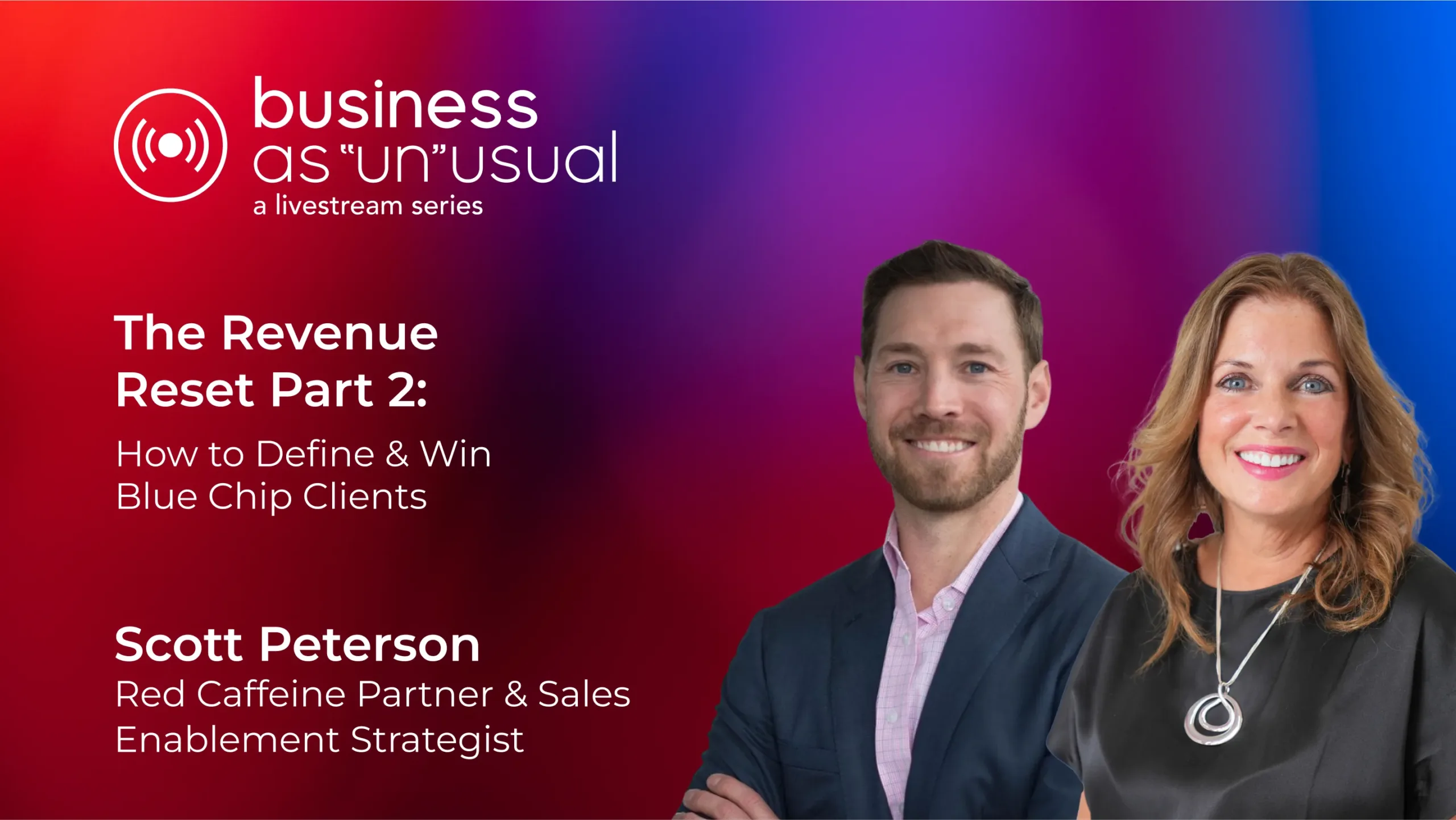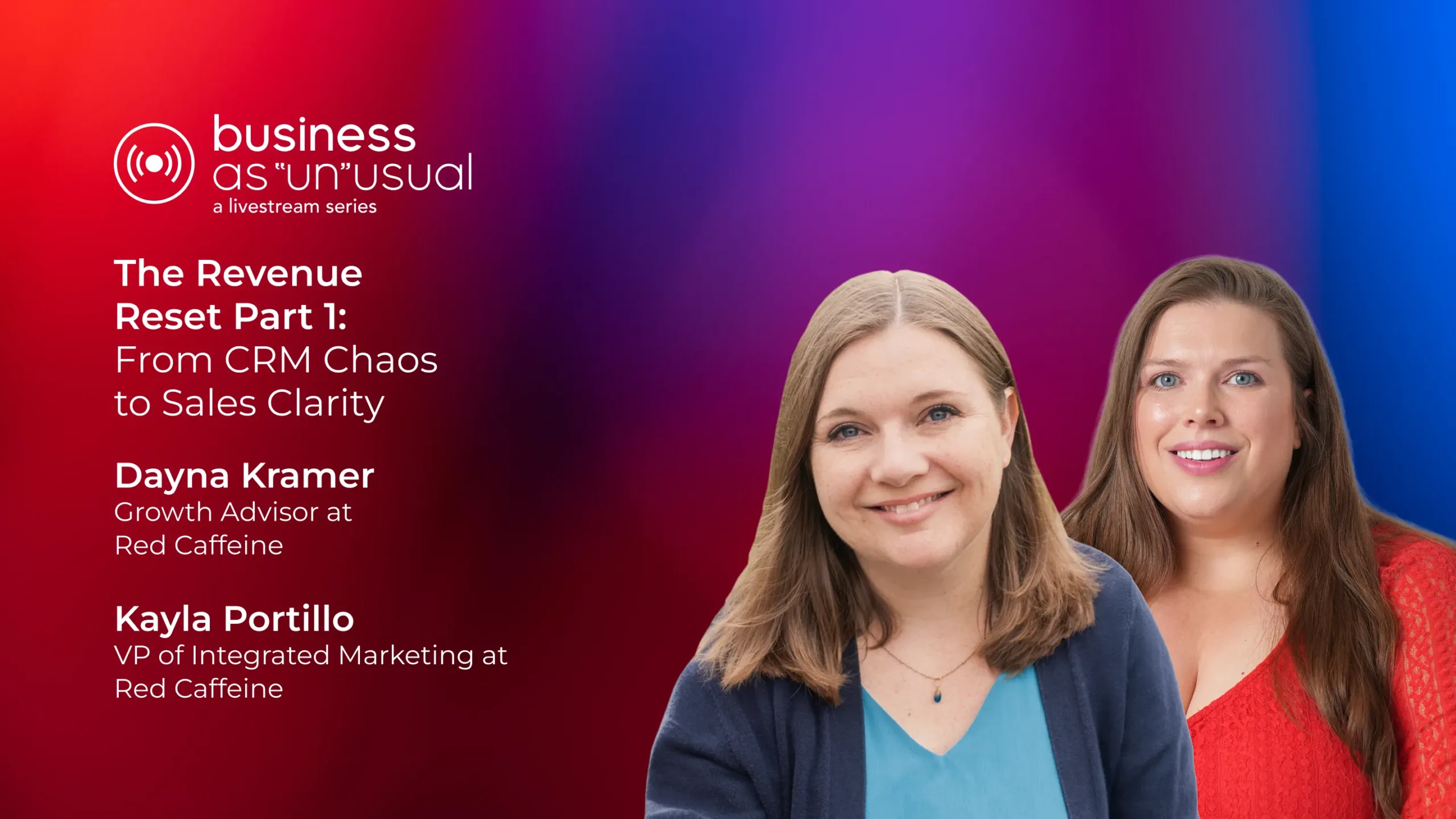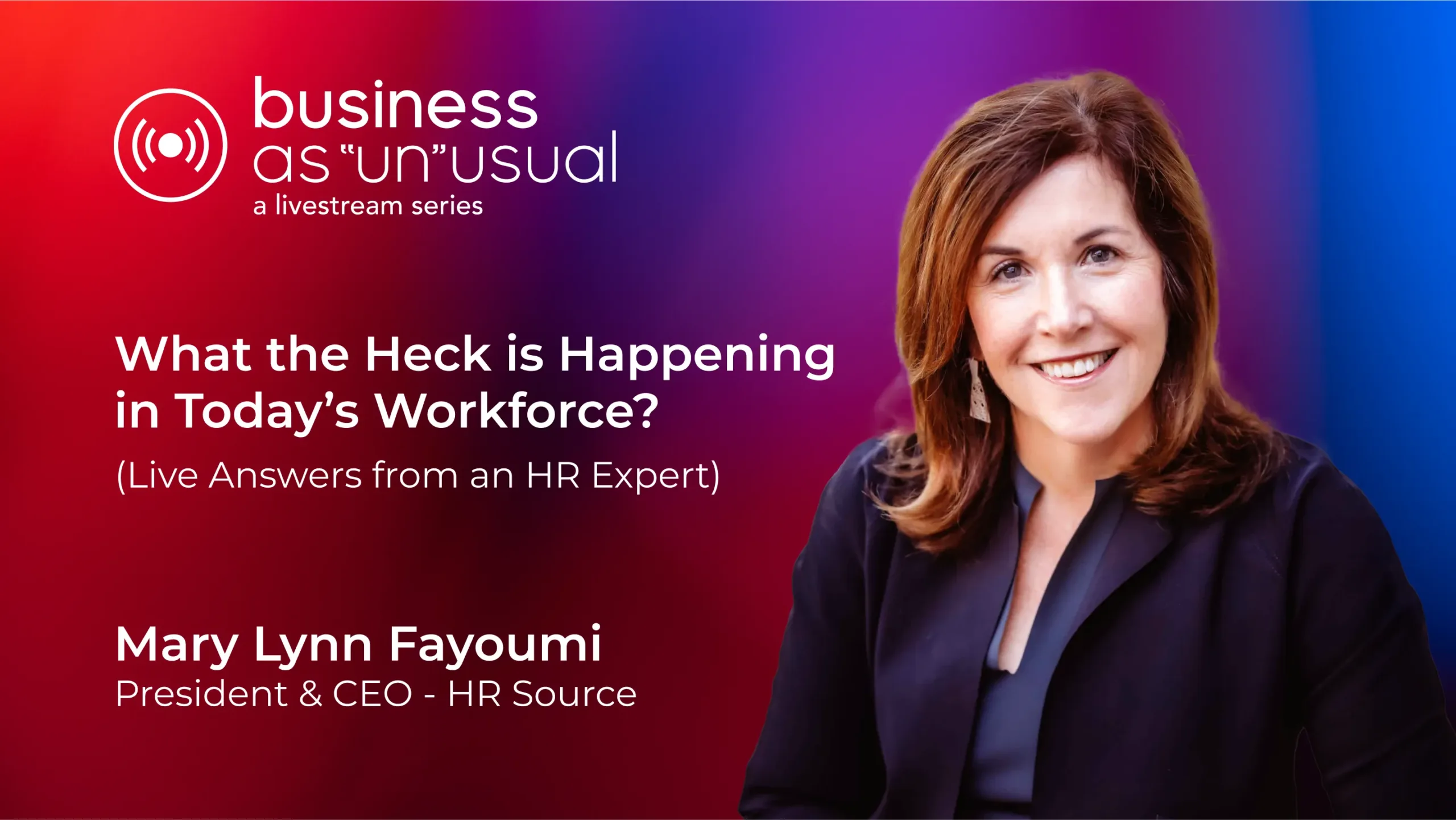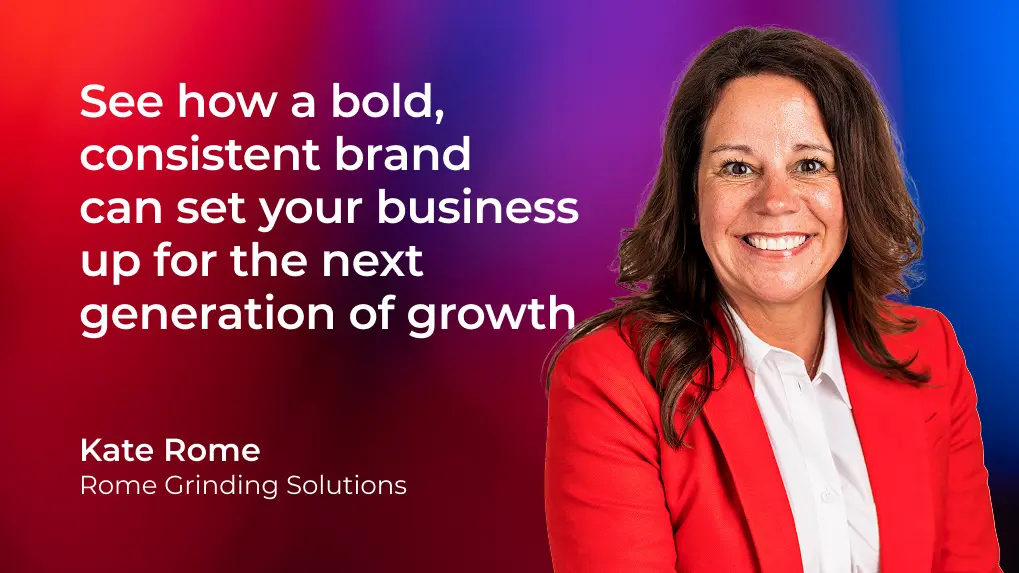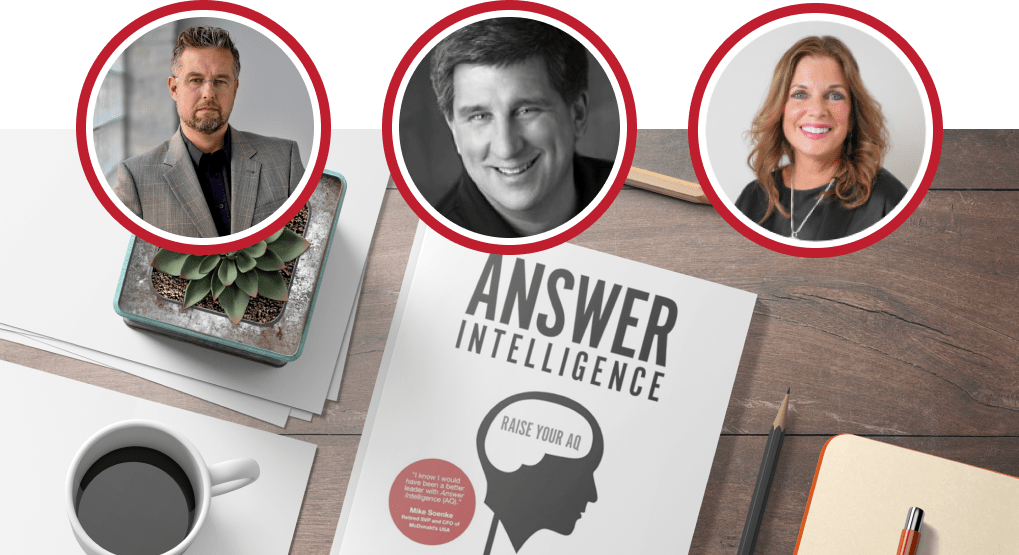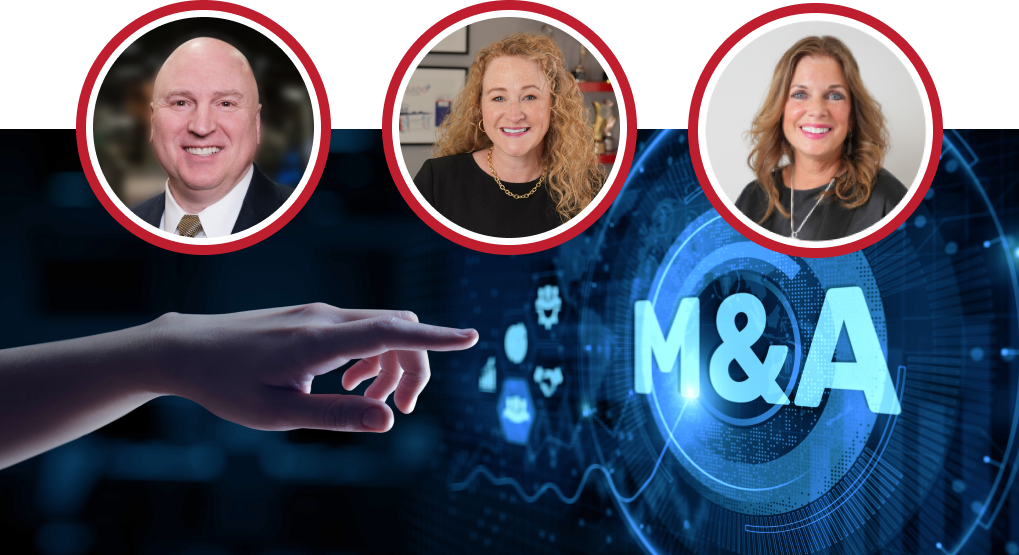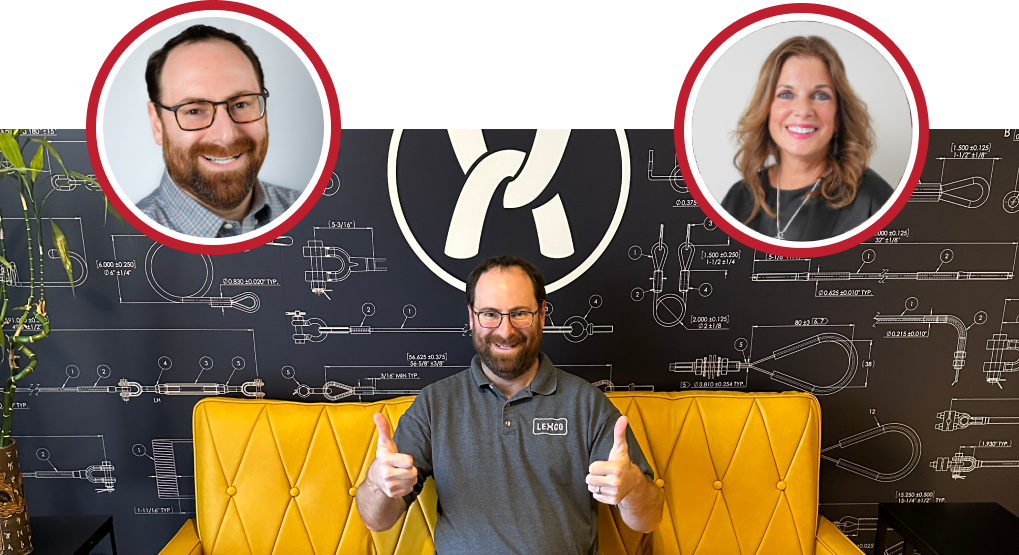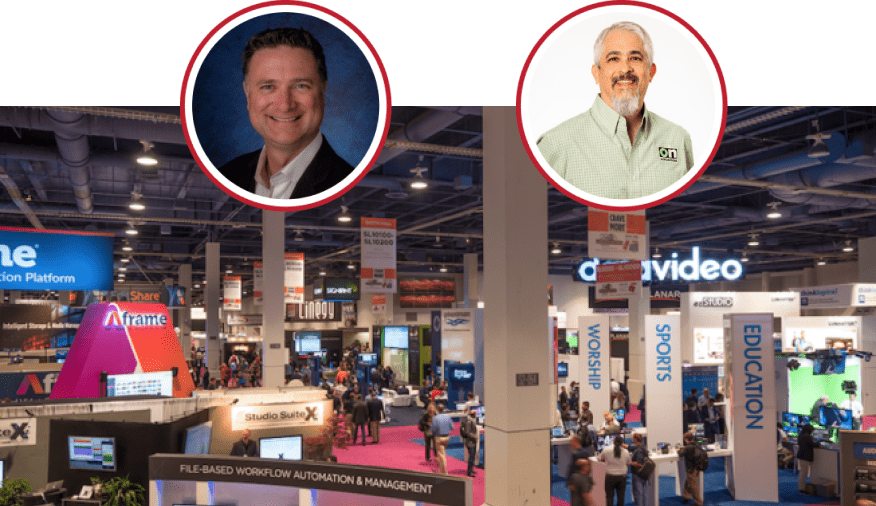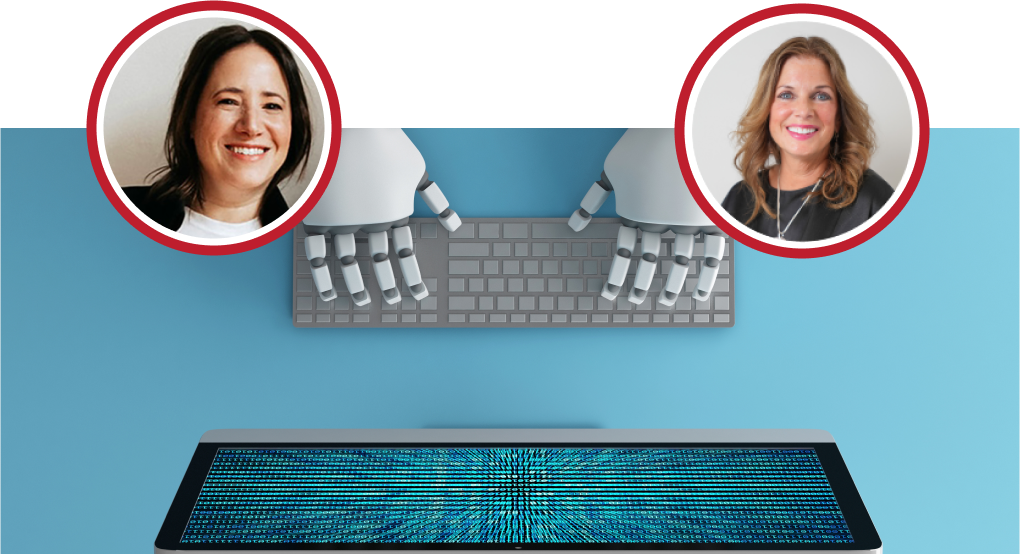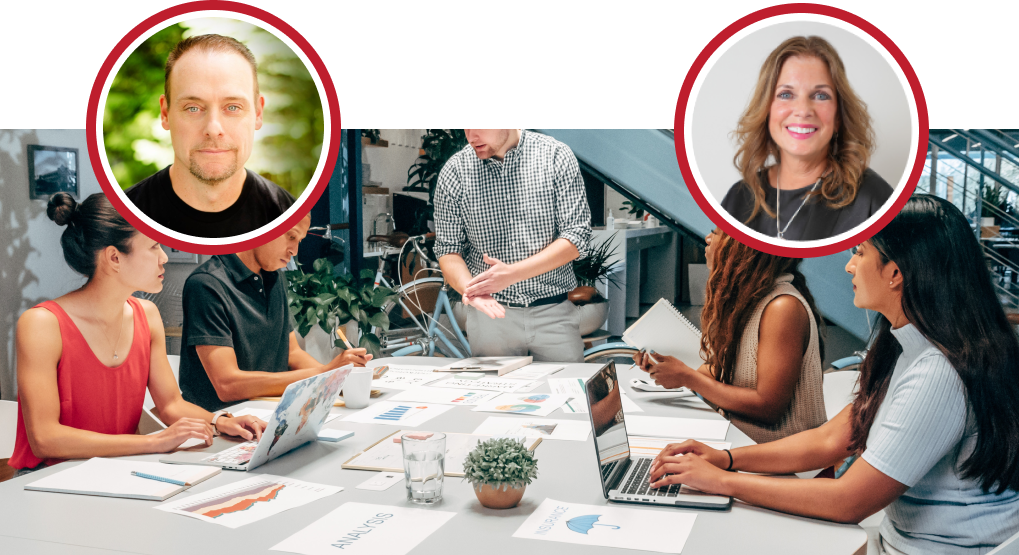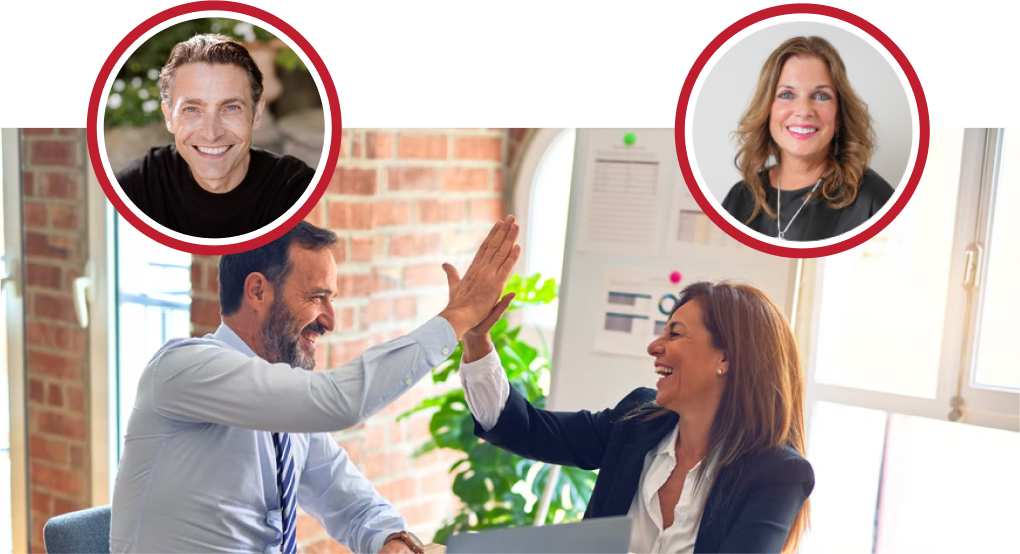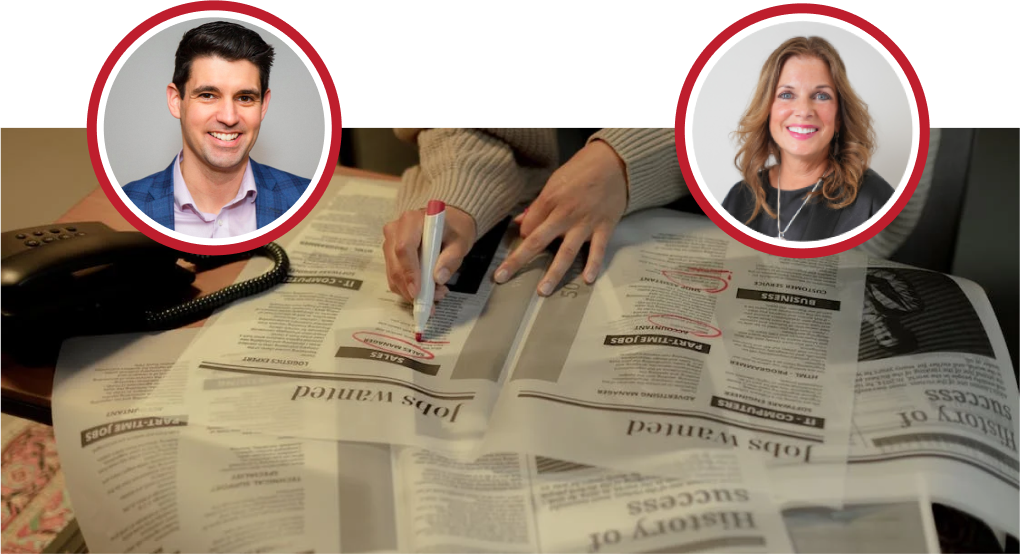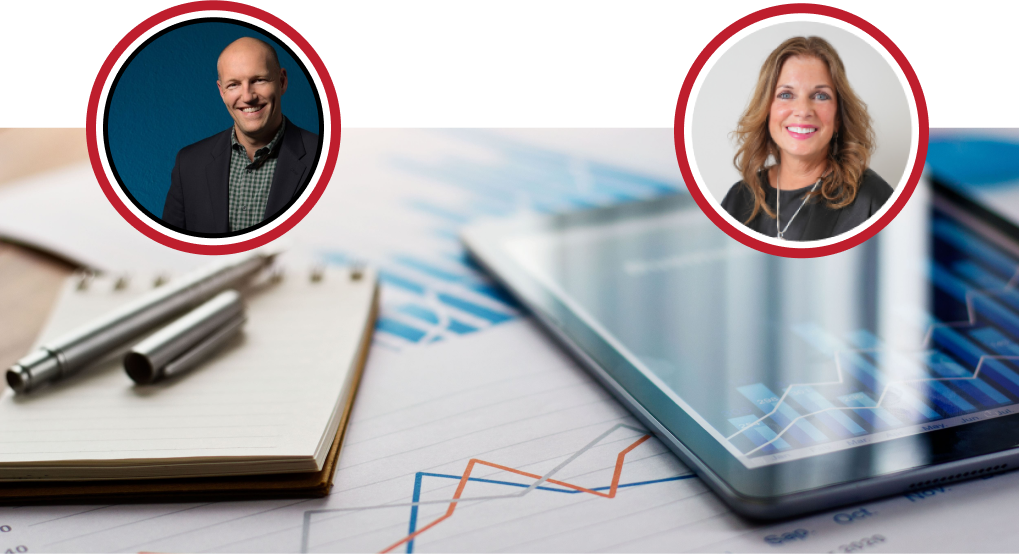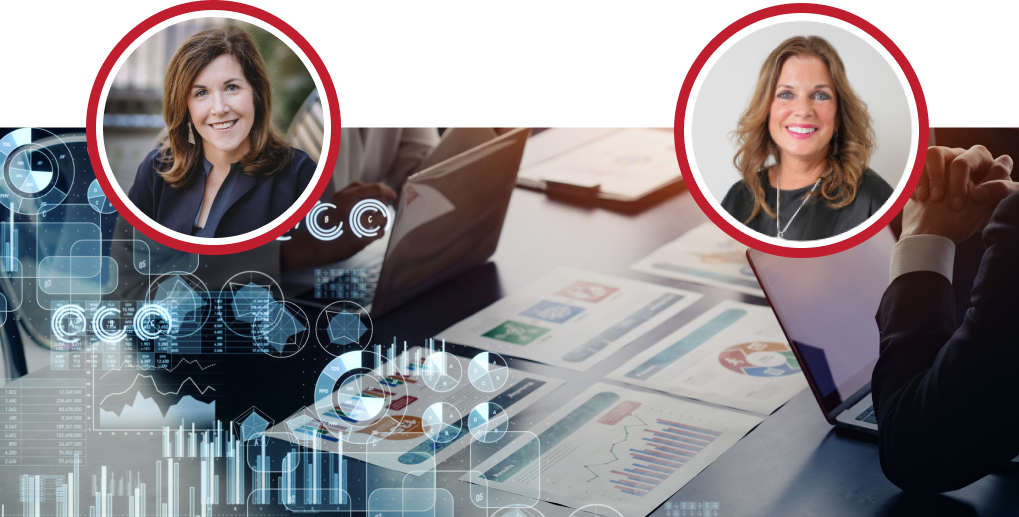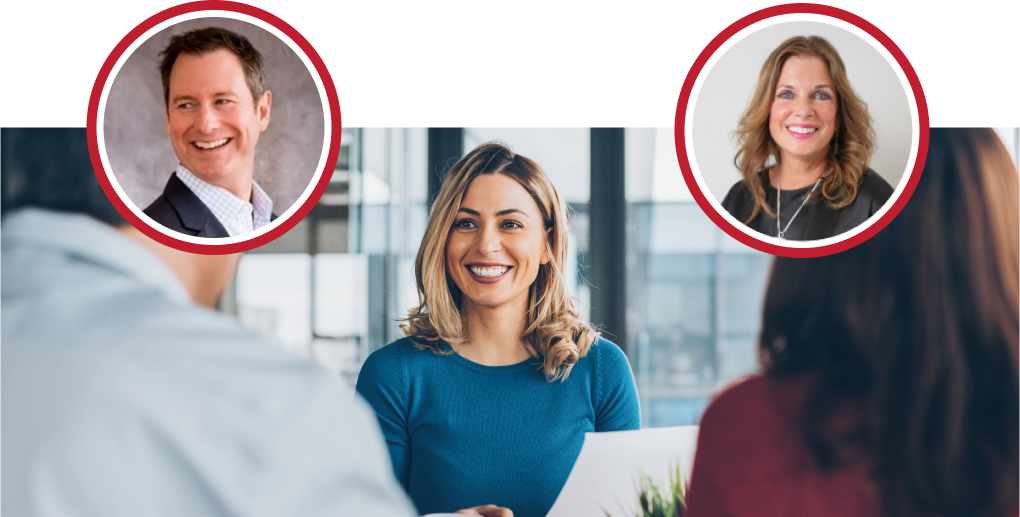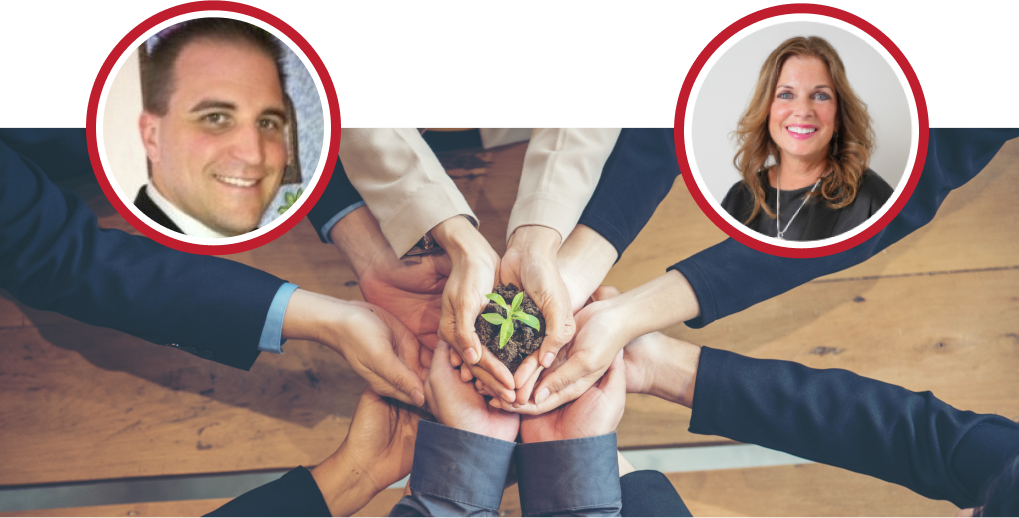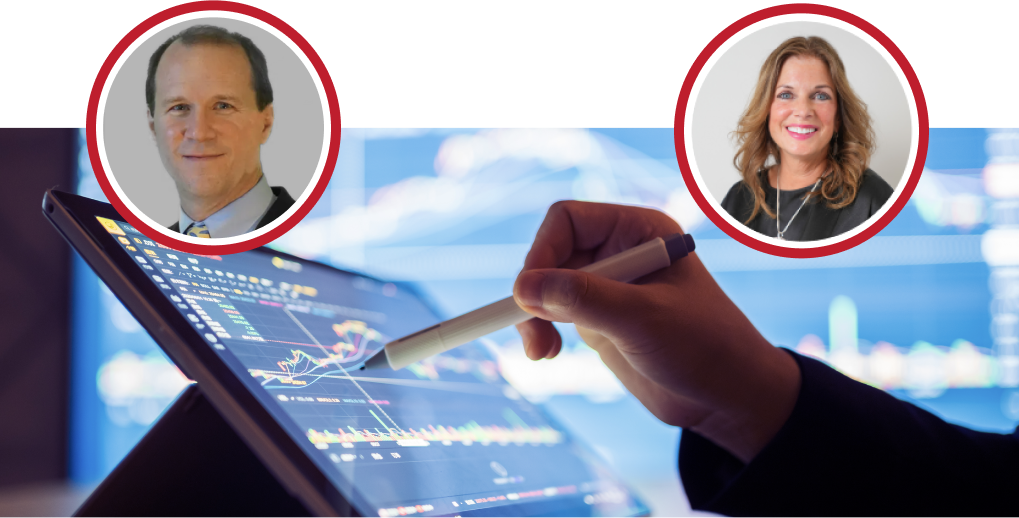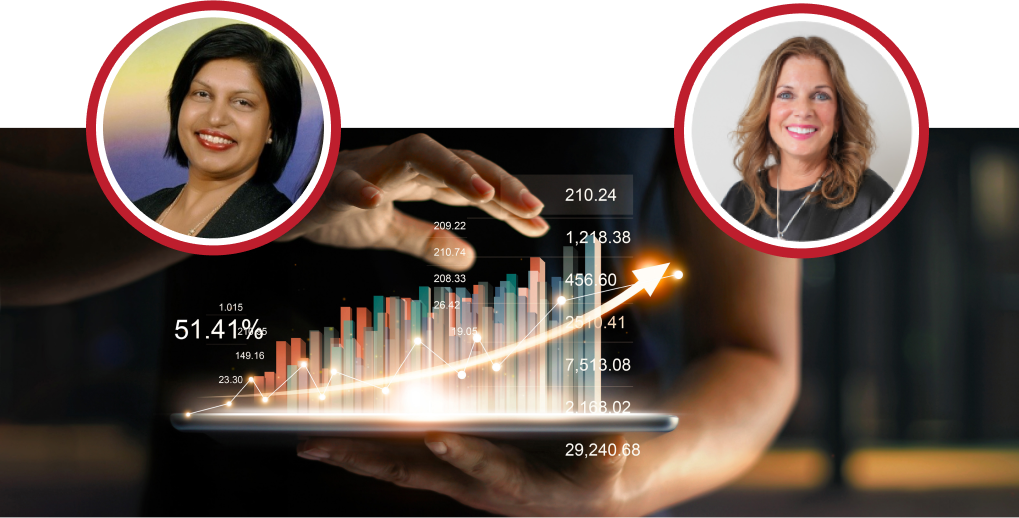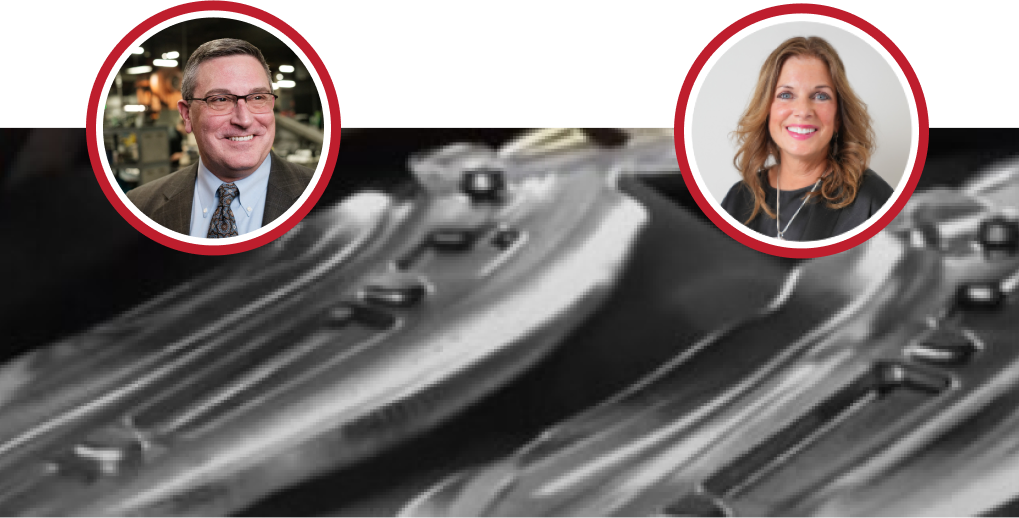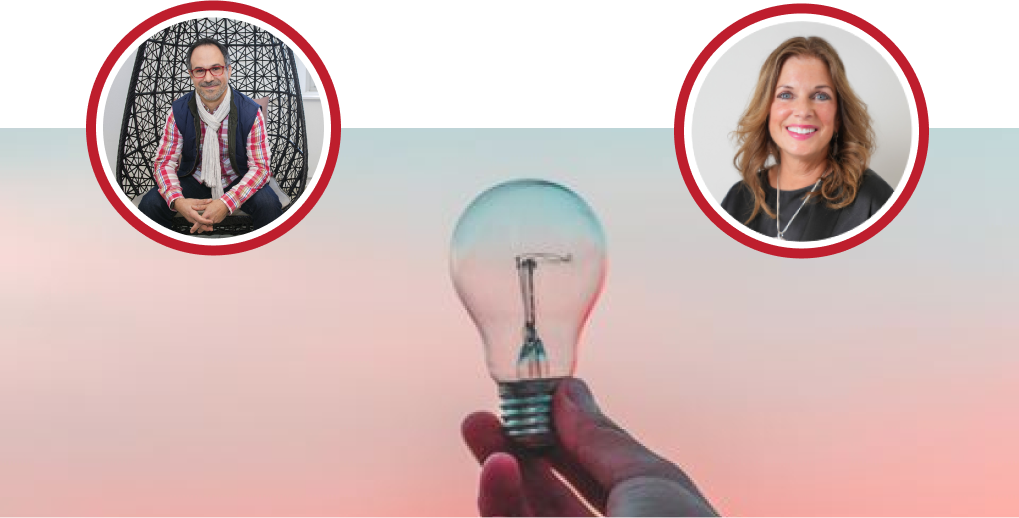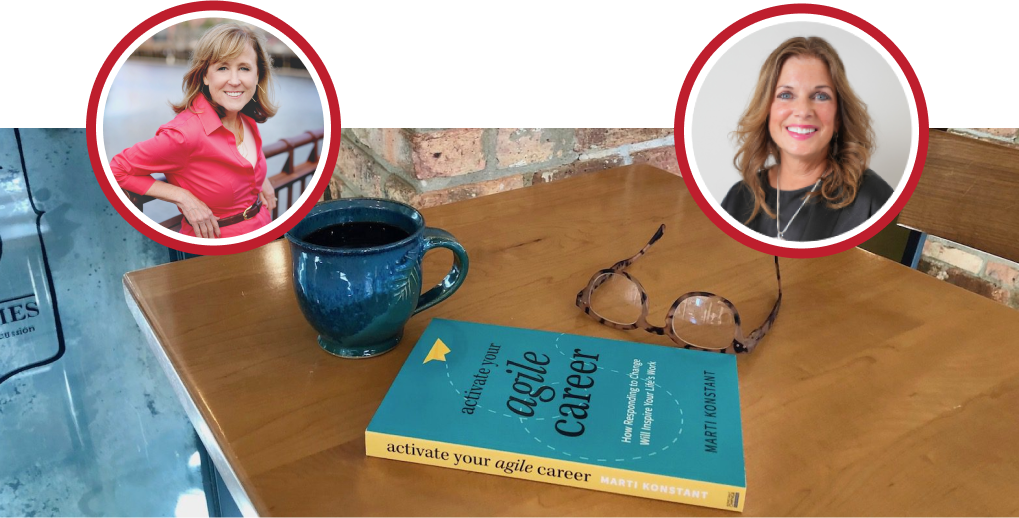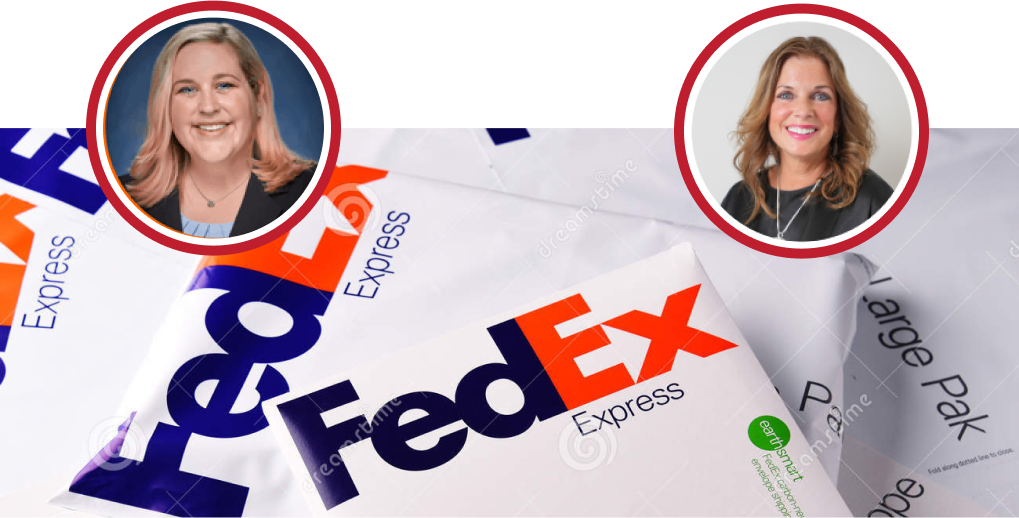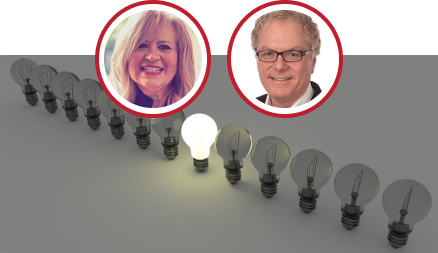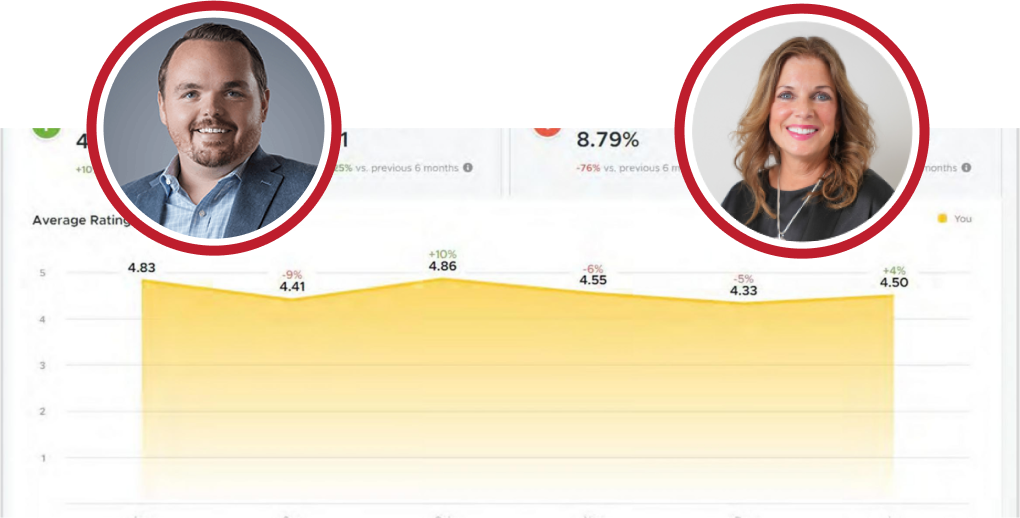Lisa: Well, let’s start today’s webinar. So again, thank you for attending the “Business as Unusual” webinar series, where we are talking with badass industry leaders who are helping us survive and thrive in today’s economic climate. My name is Lisa Behning, I’m one of the account managers at Red Caffeine, and I’ll be the moderator for today’s session. We are extremely excited to kick off our 2021 webinar series with three experts in the financial and strategic markets to really give their insights on what they see 2021 bringing and how you can set up yourself as well as your business for success as a few housekeeping notes we do have everyone on mute today, so I highly encourage you to use the chat function or the Q.A. option to ask questions of our panelists. We do have a lot of information to cover, so throughout the session; I’ll be monitoring those two channels, and as appropriate, we’ll insert questions, but otherwise, we’ll get to them at the end, so again, please use those to start the conversation we love having this be an interactive session where everyone can talk and learn from and with each other. So, with that, as I mentioned as we got started, we do give out five 20 Grub hub gift cards to the first five registrants of our webinars, just our small way to give back to the restaurant industry in support of them, so again today’s winners were Wendy G, Tom H, Lori H, Landon J and Jason V with that we’ll go ahead and dive into our actual presentation why we’re all here today. So, I’d like to introduce my co-host Kathy Steele, who’s the Founder and Principal of Red Caffeine, and also our panelists we’ll be hearing from Jeff Korenek, who is the Chief Investment Strategist at Fifth Third Bank, Michael Rary, Director of Investment Research at Cap Strap and Steven Ryan, Director of Prairie Capital Advisors. So, good afternoon to all of you, and with that, Kathy, you have the floor.
Kathy: Yeah, welcome everyone again, I’m Kathy Steele, and I am the president of Red Caffeine, and it’s our mission to build badass brands that people want to work for and with, and I’m so excited there’s so much content this probably could have been a three-hour webinar today, but we’re going to try and boil down give you some high-level thinking and then to connect you with these great experts so that you can have deeper conversations. So, I’m gonna let Mike kick it off and just give a little bit of intro to himself and Cap Strat.
Michael: Yeah, thank you; first off, thank you, Kathy, thank you, Lisa, so much for putting this together. I’m really excited about the opportunity. So, my name is Michael Rarey. I’m a principal at CAP STRAT investment research and portfolio management. We’re a fully independent registered investment advisor headquartered in Oakbrook, Illinois with also with offices in Florida, and we advise on a little over 15 billion in assets.
Steven: And I’m Steve Ryan from Prairie Capital Advisors; we’re a Boutique Investment Bank where we help advise business owners as they transition their business to a current form to either a third party or an internal transaction. We do about 70 percent of our transactional businesses ESOP related, which is where we’re founding. In addition, we do about 400 valuations per year.
Jeff: And I’m Jeff Korzenik. I’m the Chief Investment Strategist of the Fifth Third Bank. I think most of you are probably familiar with the fifth third; we are the tenth largest bank in the country, and our eleven-state footprint encompasses the traditional industrial heartland of the United States. I’m also the author of the forthcoming book untapped talent and how second chance hiring works for you and your business; it’s being brought out by HarperCollins leadership. It’s the first and only book of its kind; it shares the business case and best practices of hiring people with criminal records; this is an area of increasing importance and interest to the business community, not just because it solves labor shortages that we see coming at fifth third but also because it’s a critical pathway to the more socially just society and racial equity that we’re all seeking thank you.
Lisa: Jeff, thank you for bringing up your book, so we wanted to give Jeff a chance to introduce that, but as a giveaway, today during the session for those of you that ask questions, the first five will actually be receiving a copy of Jeff’s book. So, just a little pot sweetener to be active within the chat or the Q.A. option today.
Kathy: All right, let’s get started because we’ve got a lot of content to dive into, so Lisa if you could go to the first slide, and we’re going to just kind of start off with Jeff. Jeff, where are the markets headed in 2021?
Jeff: I think the context is very important the markets the stock markets tend to follow global growth, and we have had a big reset the charts you see before you are a representation of what happens in recessions, and then after recessions, what happens to GDP the vertical grey areas you’ll see in this chart are periods of recession the blue shaded areas are how much GDP is negatively impacted and then between those recessions those towering green mountains are the growth of GDP that comes about after the recession ends we should think of recessions as a chance to reset the economy and start another growth cycle when you have larger resets as we’ve had in the early months of the pandemic it tends to set the economy up for long and sustained expansion periods. We think that’s happening now, but if you turn to the next page, it’s not going to be business as usual we see the pandemic as this incredible disrupter, and it’s not a traditional recession; the actual peak of the U.S. economy in February down to the trough of probably April or May was very short-lived, but it was very severe this is something that is causing a large disruption across industries geographies. We think it’s going to disrupt employer-employee relationships; it’s not all bad news; it’s also an opportunity to address our supply chain; we’ll talk a little bit about that later, I think, but we should understand that it’s not business as usual there were a number of trends in place in the U.S. economy the pandemic has supercharged those trends, and that’s going to have profound implications for what aspects of the market do well we’ve already seen this and say the tech stocks the work from a home study from home and get entertained at home all of those stocks are already have already appreciated this, but we think that there’s a lot more coming as a result of disruptive policies as a result of the next step as this expansion unfolds.
Kathy: Thank you, Mike; why don’t you take us through? I mean, I love how you guys tee up your market reports; why don’t you take us through what this means from a private investment standpoint. What do you guys see for 2021?
Michael: Yeah, so when we create our investment outlook internally we’re always thinking in probabilities and scenarios and when we do the annual outlook we also like to tie these different scenarios to something that’s more relatable and so this year what came to mind was the movie back to the future actually a famous film just had its 35th anniversary and the reason why that came to mind was everybody in 2021 really just wants to go back to how things were pre-pandemic but the reality of the situation is things happened in 2020 that are going to permanently impact the future of how markets function businesses function and that’s a lot of what we’re going to unpack today for sure so like to walk through our different scenarios and the probabilities we’ve assigned to them the first one the base case is what we call stuck at 87 miles per hour and the idea there is there’s the scene in the movie where doc says to Marty, when this thing hits 88 miles per hour you’re going to see some serious stuff expletive and the idea there is this year we’re going to make a lot of progress to getting back to the way things were particularly around the virus with the vaccine effort but we’re not going to get all the way there the virus is going to be something that we’re going to have to live with in some way shape or form going forward. So, our outlook on the vaccine rollout and the virus is once we get towards somewhere around may there should be enough vaccinations that have been delivered and taken that the over 65 populations should basically been vaccinated if they so choose and that’s when the link between cases and hospitalizations and deaths should be broken somewhere during the springtime and so that’ll make the virus much more manageable but that’s just the first step the next step would be getting towards herd immunity and that’s a much longer a much taller hill to climb so we’re going to make progress there but we’re not going to get all the way there most likely in 2021 and from an investment standpoint that’s okay because what has driven markets primarily in 2020 and is most likely going to continue to drive markets next year is not necessarily economic growth the link between economic growth and markets has all but been severed and that happened around April last year what matters more is stimulus and in terms of Central Bank stimulus and fiscal spending and as long as the virus is still an issue and any economic disruptions or market volatility can be tied back to the virus we think that Central Banks and Governments are going to feel compelled to provide more stimulus and that’s going to support valuations and support the market so our base case not getting all the way there stuck at 87 miles per hour but still a very solid environment for an economic recovery next year as well as a solid environment for investing and we obviously contrast that to our bear case in our bowl case we’ll just touch on those quickly so the bear case in our view the biggest risk to markets next year is actually not the virus or lacking progress on the vaccine the biggest risk is Central Banks and Governments starting to focus more on the long-term effects long-term side effects of all of the stimulus that has been delivered and all the money that has been created so if Central Banks and Governments feel compelled to deal with longer-term issues such as the fiscal deficits such as income inequality such as wealth inequality that looks like decreasing spending raising taxes signaling faster interest rate increases down the road shrinking central bank balance sheets those things are bad news for markets and if any of those were to happen a lot of the valuations in the equity market just don’t make sense the numbers just don’t make sense so that’s the biggest risk we’re watching and then finally the bull case 1.21 gigawatts of money at 10:04 pm that’s the scene in the movie where you have to get the DeLorean to the clock tower at 10: 04 pm because when the lightning hits it’ll pump it full of 1.2 gigawatts of power which we know of course is actually gigawatts and so you get this idea that I don’t know how much 1.21 gigawatts of money is but it’s a lot and it’s sort of your sort of everything’s happening at just the right time so the vaccination effort goes smoother than expected we’re able to reopen consumers and businesses feel very comfortable making up for lost experiences by unleashing pent-up savings and borrowings that they accrued last year and you have a strong economic recovery as well as the market continuing to grind higher because Central Banks and Governments don’t still even though the economic recovery is strong still don’t even think about pressing the brake pedal. So, that’s how we think across those three different scenarios in the next few slides; we have a couple of supporting slides for that outlook. So, in this first one, I want to touch on money supply growth, so this was the biggest chart for 2020. We saw in April and May that financial markets completely detached from the real economy and the fed effectively severed the link last year between the economy and financial markets that link is the credit markets and the fed doing unprecedented things last year not just the fed but other Central Banks namely buying corporate bonds for the first time ever severed that link so what’s more important now in our view for markets is not economic growth it is money supply growth the fed and Governments created money last year this dark blue line is year-over-year growth in the U.S. money supply and we are at an all-time high more than double the previous all-time high in money supply growth and when money is created but the economy is shut down and there’s nowhere to spend it has to go somewhere and that somewhere was financial assets and that is what markets are focused on valuations now are expensive all financial assets are expensive as long as there is money being created it will continue to flow into financial markets. So, that’s what we’re watching and as long as the virus is still an issue money supply will likely continue to grow to sort of sweep that under the rug so that’s the biggest thing we do expect money supply growth to continue next year albeit at a slower pace but still much faster than is required to support valuations and the next thing talking about money being created now we’re looking more on the consumer side at personal income and we can focus on the green line first so that’s personal income this is the trend over time going back to 2005 and you can see personal income at the far right there peaked in April once the cares act hit and economic impact payments were distributed so personal income a lot of folks benefited from expanded unemployment benefits they benefited from the economic impact payments all that fiscal stimulus and that definitely propped up personal income so the economic downturn last year wasn’t necessarily because there was no money to be spent there was simply nowhere to spend it and now we’ve gotten to the point where the underpinnings of this economic recovery have become so strong that if you focus on the blue line now that’s personal income and we’ve stripped out the economic impact payments and expanded unemployment benefits and that’s still above trend so this is a very bullish starting point for an economic recovery you look at where we’re at now in terms of personal income well above trend most folks so there’s a lot of noise in this data and we’re going to talk about I’m sure the gap between the haves and the have-nots but by and large personal income is there and it’s a very bullish starting point you compare that to 08 it took four years for personal income to get back to trend after 2008 that was a problem of there are places to spend money but there is no money to be spent that’s a much bigger problem we don’t have that problem this time so as soon as the virus situation is taken into control it gets under control and the economy is able to be to reopen we think there will be a strong economic recovery we hope it’s not so strong that Central Banks and Governments feel like they can step on like they should start stepping on the brake pedal and the last thing I want to touch on is we know this money supply growth that has been unprecedented has totally distorted financial markets and we’re going to talk about valuations later but we’re going to take a look at valuations here for the s p 500 in particular and if you look at any number of valuation metrics for U.S. equities right now you’re arguably top three most expensive equity markets in history if you look at relative to earnings relative to sales relative to any measure the only thing that is more expensive than U.S. stocks right now are cash and high quality bonds. So that in that sense stocks still look attractive so that’s what we’re trying to show with this chart this green line is the earnings yield on the s p 500 less or minus the 10-year treasury yield when this line is high that means stocks look cheap relative to high quality bonds and what you can see right now is the that’s called the equity risk premium it’s at 2.7 percent which is reasonably attractive over the past 30 years the average has been 0.9 percent so stocks do look cheap relative to the alternative so that’s why you’ll hear a say tina there is no alternative money should continue to flow into equities and when you have this disparity with stocks looking cheap relative to bonds are only a couple ways where this sort of normalizes one is bonds get cheaper that would mean interest rates would have to rise that we think is virtually off the table this year primarily because there’s too much debt in the world we cannot in we cannot afford higher interest rates the only time the fiscal deficit was this bad and debt to GDP was this ugly was after world war and that situation was so untenable that the fed had to cap interest rates to allow the treasury to roll over their debt so we think interest rates rising that’s unlikely it’s in no one’s best interest so the path of least resistance here is just stocks get more expensive and they can get plenty more expensive if we go from a 2.7 equity risk premium down to the 30-year average of 0.9 that’s about 66 upside in equities from these levels so as long as interest rates are low as long as money is being created and it has to go somewhere we still think tina there basically is no alternative to equities and valuations can get more expensive.
Kathy: Thanks so much. I always appreciate that you really boiled it down because this is a lot to interpret, and I love how you connected it to something nostalgic, like back to the future, one of my favorite movies. So, I’m going to let’s step into your touch on valuations; let’s kind of step into that question set so, in 2020 one, we did really see how vulnerable our U.S. supply chain was; what are your thoughts Jeff on where we’re going to go with global growth? Oh, I’m sorry, I’m I’ve got the wrong question so.
Steven: One thing it’s a funny kind of back to 2021 Prairie is an organization, little bit different than certainly Michael and Jeff they’re looking at daily looking daily weekly monthly yearly volatility we as a firm as a transactional firm we’re looking longer term, we’re looking at the markets as it perceives over a seven for example when we do a feasibility on our transaction we’re looking at a seven to ten-year valuation saying what is the business going to be worth over an extended period of time, so the volatility you’re seeing is that they’re talking about is not really what we’re seeing the one thing about 2021 if we’re looking at it is just for the stakeholders to just focus in on what it is they want to accomplish, and the one thing is don’t assume 2021 is going to be better than 20 that 2021 is going to be better than 2020. so that’s a that’s something to be cautious about because there are always unexpected things that may trip you up an example as a networking group today and I heard that the Biden administration is talking about getting rid of the 1031 exchange for real estate and that is an example as Michael was talking about some of those structural changes that can occur that can affect particular parts of the industry so those are the things expect that unexpected as you’re kind of looking at the things that you want to accomplish this chart talks a little bit about kind of the deal flow as we’ve seen it over the course of the last year last two years and as you can see things were humming along in 19 going in until cove had hit you saw some of the deals that were in the market that continued to close most of those that were the April and may time flame were deals that expected to close and they were typically really good companies so from that perspective these things that you’re seeing here are income are companies that have been less impacted by covid in many cases you are seeing some companies that are actually positively impacted by Kovitz so as you can see even in the pin the the throws of the pandemic some deals were getting done and now as you can see that lineup as valuations and as liquidity has gotten into the market as Michael and Jeff had talked about as that liquidity is in the market we’re seeing a nice ramp up of transactions for this year so if we go to the next page talk a little bit about the multiples that we’re seeing and multiples have recovered since this since the dip which is it’s interesting is you would you would have thought that there would have been a bigger dip in this and part of it is you’re not saying it is one the really good healthy company so they haven’t been quite as impacted by the the the pandemic is as most and most of those companies that have truly been impacted aren’t being sold right only good companies get sold those companies that aren’t getting sold are the ones that are being impacted more. So, when we get back, oops, I think we lost the slide.
Lisa: I’ll be back on in one moment; sorry, a technical glitch there, so continue going.
Steven: The one thing about the one thing about the slide the multiples is a couple things you can notice from that one size matters the bigger companies are always going to be worth more than the smaller companies but you also will look at and I think that the slide that you were trying to get to was really talking about some of the industries that were much more impacted by coven so anything that was related to travel or entertainment where people were literally leaving their homes going somewhere those industries were truly negatively impacted and you’re not seeing transactions being done in those space which means that part of the multiple that you would have expected a significant contraction in is because companies that are in oil restaurants those transactions aren’t occurring or as all the other good companies are continuing to execute and there is still a lot of a lot of liquidity this kind of highlights some of the industries as we look at it some that have been materially impacted some of them that have been covered proof and some of the modest impact of them and you are seeing some companies that have been weaker companies over the course of time that have actually turned it around during covid some of the plastic manufacturers that are now making these plastic dividers those businesses were really struggling for a while they’ve had a blip from covet but that’s a temporary blip that is not a permanent sustainable recovery in that business but those that reacted quickly have taken advantage of those of those things. So, if you kind of go to the next chart, oh, go back one, go back two, please. So again, this gets back to the multiples that we’re talking about and then the size of the companies we are actually seeing that this is actually going to continue to recover even more we are seeing a significant amount of liquidity in the markets where the funds the private equity, the strategics, and the family offices are all looking at trying to get and put liquidity at work, and there’s a limited number, do you think of it supply-demand there’s a limited number of companies that are actually out there that these higher amounts of liquidity are chasing. So, we fully expect multiples to recover and be a really strong 2021. On the valuation side, talk a little bit about size matters in the valuation; that’s why you get the higher multiples; the other industry multiples matter. So, if you’re really looking at go to the next slide these in between these industries so if you’re looking at technology you’re looking at grocery looking at consumer products and cable all those things that connect people to the lifestyle that they’re living now those multiples are being substantially increased over the course of time in many cases transactions that are in the market are getting reset because they’re doing so well as it pertains to as it pertains to the pertains to their business and in many cases the dynamics of that business has changed when we look at some of the technology companies I don’t see that there’s going to be a great change in people going back to the office quite as quick as you would expect and some of those technology companies are benefiting as more and more people are doing zoom meetings and in zoom webinars and the need for that technology means cable companies are upgrading their systems you’re having to need higher flow through as it pertains to that Microsoft is being able to charge for each particular location that they’re selling their Microsoft products through as opposed to bulking that together that they would do with a corporate site so those are some paradigm shifts that are that are permanent within the within the industry let’s go to the next slide and one of the things that was asked about a little bit about the PPP funds and how that impacts it so this is just an example for people to just think about so on the far left you’ve got a company that was had an enterprise value of 12 and a half you take the debt down you add back cash you get an equity value right of 10.85 on shares of 100 gives you a 108.50 now that same business that has been in its it’s been impacted slightly by covert to the tune of 20 and which some people would think is a large impact some people say that’s not that big of an impact but then if you carry that forward and carry it down you have some similar factors within the business they have less debt because they have less working capital so they’ve retained some of their debt they have some less cash on their balance sheet because they’ve used that cash to pay down the debt but the equity value is down to eight to use an example which means it’s 80 a share down 26 percent and but when you look at the impact post covid because covid is just going to effectively be the coven f you can get covered forgiveness so that’s a significant barrier because you have to actually first take the loan get forgiveness of the loan for it to actually be added back to the valuation so when you’re looking at this it adds an extra 15 a share or 1.5 call it million to the net bottom line because it’s effectively considered income it’s the forgiveness of principle which would effectively be income from an accounting standard perspective so when you’re looking at that instead of a company having a 26 reduction in the value you’re going to see about a 12.4 percent reduction in value all else all else being equal.
Kathy: So, depending on where your business is at, like what top-line sales are and like if you’re riding a wave versus there’s a long tail opportunity of growth it’s it really there’s a lot of factors in in in play for valuation.
Steven: And the factors as we try to as we look at it are those factors temporarily permanent yeah so temporary would be a plastics manufacturer that can maintain these produce these glasses that are dividing the blackjack tables in Vegas right. You get all these things, so that’s a temporary improvement that’s not a permanent paradigm shift a company that’s doing zoom entertainment online that may be a permanent paradigm shift in that business and may be able to carry that wave further.
Kathy: Okay, that makes sense. All right now, let’s talk about our supply chain. I think this was something we worked on a lot in manufacturing. We saw this really impact a number of our clients both positively and negatively, and so what are we gonna see based on that that 2020 vulnerability that was created and how our economy retools our approach to global growth.
Steven: I think that’s the next slide; this is the multiple slides between strategic yeah between strategic and knowledge.
Jeff: Yeah, let me take this and I want to start out by sort of dismantling a myth that’s out there and that is that the U.S. lost manufacturing employment because of technology like many myths that persist there’s a there’s a kernel of truth it is of course true that technology destroys manufacturing jobs but it’s been doing that for 200 years in the united states and the way it has worked historically is that technological improvement creates productivity and crew improvement which creates more wealth which creates more demand for manufactured goods which creates even more manufacturing employment and that’s the 200 year history when we lost manufacturing jobs earlier this century we lost them because we lost market share and that’s the chart on the left it shows you this the sharp break in market share of global manufacturing employment that occurred with the opening up of China as further proof that this was not just technology think of technology as really a globally available good if you look on the right hand side that’s actually global manufacturing employment it grew by 40 million outside the U.S. net out the loss of five million jobs in the U.S. recruit by 35 million. So, manufacturing jobs didn’t go away they went abroad and this is a something where the trump administration really did move the needle in in the discussion of this there’s now bipartisan agreement that it is possible to be less reliant on China and in in our supply chain for manufactured goods and this is really a siege a shift this is something that’s part of president Biden’s build back better he has a specific made in America proposals as part of his campaign but ultimately it boils down in a large degree to the economics and if you just flip this to the next slide you’ll see that these economics have changed there was a time when it made enormous economic sense to send manufacturing abroad regardless of the security of the supply chain issues it simply was overwhelmingly economical to do so we take data from the Boston consulting groups index of manufacturing cost competitiveness this is indexed to the us so by definition a reading of 100 means you’re the same as U.S. manufacturing cost if you’re above 100 you’re less competitive than the us if you’re below 100 you’re cheaper than the us and we first started looking at the first five bars the blue bars on that chart and we said well where are the powerhouse manufacturing nations if a company were looking to outsource manufacturing where would they go to and of course you would start out by asking who has capacity and so these big manufacturing countries you can see that although China is still a little cheaper and that was based on end of 2019 numbers and it’s likely changed towards being more expensive since then you can see that there’s no really cheap manufacturing left in countries that have capacity we then looked at the nations that are in this Boston consulting group index we said well what economies are still very cheap and those are the five cheapest countries on the right hand side those last five blue bars and you’ll see that although there are cheaper places to produce goods than the united states it’s not really overwhelmingly so this is nowhere near what we would have seen say back in 2005 or 2003 when he would have seen China as a fraction of U.S. manufacturing costs so the economics have changed now if you’re going to go abroad the cheapest country of the major significant manufacturing nations is Indonesia this is not the same as going to a modern day China or Germany today there’s rough edges to this kind of outsourcing there will be winners maybe this is the time India’s day in the sun comes that’s been a struggling manufacturing story for a long time Mexico will certainly be a beneficiary and that does flip back into supporting the U.S. through near-shoring and border states like Texas benefit from a lot of that but we think the U.S. will get some of these jobs back you couple that with a focus on particularly the healthcare supply chain in trying to diversify away from China become less dependent we think we’ll see a renewed focus on bringing those jobs back to the U.S. the dollar is appears to have topped at least near term and that’s helping make us more competitive we still have some real challenges in this area though we’ve lost some of the infrastructure in areas we’ve lost so many manufacturing hubs over the last couple of decades that it’s going to be hard to bring some of those back education is a big issue we have a generation of parents who learn don’t send your kids into manufacturing they should go to four-year college degrees whether that’s a fit or not because manufacturing jobs are going away we have to re-educate not just students but their parents as well about the viability and really terrific opportunities for careers here even if they’re not a traditional four-year college degree and then we’ve simply lost some some industry clusters the shoe industry used to be based in the united states it’s unlikely that we have we simply don’t have the cluster to bring that back but there’s lots of areas food manufacturing metal fabrication especially chemical manufacturing all of these are vehicles all of these are areas where the us really has a deep expertise a very robust infrastructure and we should care about this it’s not to say we’re not going back to 1948 America when half of all jobs were in manufacturing but every manufacturing job we get adds quite a bit to the economy economists like to talk about multipliers and it was traditionally thought that the multiplier associated with manufacturing activity was about three every manufacturing job was associated with three jobs overall in the economy every dollar of value added in the main in manufacturing was associated with three dollars of GDP economists today believe that number is way too conservative and that the multiplier may be as high as seven or eight times and it certainly fits a manufacturing employment certainly is a great fit for people for whom a four-year college degree is just not the right personal fit this is these are great opportunities so we expect a lot of focus on this it’s going to take a while these things don’t turn around on a dime we lost this over a period of decades it’s going to take us a long time to bring some of that back
Kathy: So Jeff, what about unemployment, so what kind of impact does that have on unemployment in terms of where we were last year with really an employee market and then how where we are now?
Jeff: Well, we’re pretty constructive on the long term for the us economy but what we are and maybe frankly Michael even a little bit more constructive than your very interesting outlook but where we worry a lot is disruptions in the labor force and there was an interesting article about two weeks ago on a friend page of the wall street journal had had two side by side headlines one said we’re suffering job losses it was the December payroll number that came out in early January and then the article next to it the headline next to it said we have a shortage of labor and manufacturing so there seems to be this paradox going on in in the labor market and we think it’s important to understand that the pandemic as this supercharger of trends is causing some real problems in labor markets one is and this is the one we show here in this chart is long-term unemployment this is the percentage of your unemployed who are long-term unemployed that’s 27 weeks or more six months or more and we’re going up to the record set at back in 2010 when nearly half of everyone unemployed was long-term unemployed that’s significant because the long-term unemployed tend to not get back in the labor market but drop out all together and that’s a really unhelpful sign but it’s not the only area we’ve seen it there’s a skills mismatch if you were a 50 year old working in retail on a in a department store that job if it goes away may be offset with a job at an Amazon warehouse but that doesn’t mean that you’re in the right geography or that’s the right fit for you normally these things go over much more gradual pace the pandemics accelerated it and that’s very disruptive for labor we’re also seeing it there was a decline a very troubling decline of women particularly age 35 to 54 year old women we saw a decline in their labor force participation very dramatic we think it’s associated with taking care of kids who can’t go physically to school these are very dangerous things for the labor force and these are the kind of things that our growth is long-term very much tied to and then this is also of importance thank you because we are demographically challenged today in the united states this is the birth rate in the U.S. and you’ll see right in the middle is a is a spike up a little peak and that’s the highest birth rate for decades surrounding it that’s the millennial birth boom we’ve got those millennials they peaked and their birth rates peaked in 1990 those are 30-31 year Olds today they’re pretty much all in we are running out of labor at least domestically born native-born labor in the united states you can see this birth rate’s declining demographers use another measure called fertility rates how many how many children would women be expected to have over their lifetime we are below replacement rate we are not replacing our population the only reason that the us has kept the growing population is through is through immigration but immigration is becoming not just politically a little bit challenge obviously we’re seeing a change with the Biden administration but more importantly long-term the demographics of the world look very similar China’s fertility rate is well below the us they’re not replacing their population if you go to the 30 odd nations that are part of the OECD the organization of economic cooperation and development that’s those are the developed nations in the world every single country but one has a fertility rate below the rate needed to replace their population the one exception actually is Israel but that’s a tiny country I tell employers who are challenged for labor there aren’t enough Israelis to go around we need a different strategy than counting on immigration.
Kathy: All right, so let’s kind of push forward. I would love to talk about the notion free pandemic; there was a real push towards reimagining mike. Do you want to give a little color here so we can get into the kind of reimagining capitalism, so it was really a push for companies to prioritize social issues alongside or over the stakeholder value, so can you speak to what your thoughts are here?
Michael: Definitely, yeah, the traditional notion was that you could focus on environmental, social governance type initiatives, but they are most likely at the expense of profits, financial performance, stock prices, etc., and that’s just not the case, so we think yes companies will continue to prioritize these items, and no they will not have to compromise, or it will not be at the expense of profitability and performance. So, all we’re showing here is there’s been so much research the research around the impact of ESG on financial performance for individual companies, and stock returns have swelled and are quite significant now, and this study was basically an aggregation of all the studies around the impact of ESG initiatives on company financial performance, so over 2200 empirical studies and the bottom line is companies that focus on these things in all of these studies found that over 90 of them that actually improved their financial performance or at least had a neutral impact. So, this is this is very exciting for us it’s very exciting as an investor and especially going out and picking investment strategies we are our clients are retirement plans institutional non-retirement assets so things like foundations reserve accounts and then individuals and basically what this means to us is we can fully integrate ESG criteria into our investment selection process and create portfolios that align with each of our clients values and initiatives and not have to sacrifice on investment results whatsoever so it’s extremely it’s extremely exciting for us the point where for example we recently are in the process of working with a women’s group and we were able to create a portfolio where every investment in the portfolio we know that that manager proxy votes for gender equality and that’s just such a great value add to know that we can do that without having to sacrifice investment performance is excellent so this is not just a fad it’s not a short-term trend there’s there are generational tailwinds behind this as well that we think are very sustainable.
Kathy: Yeah, I think we’ve felt it in the mid-market and seen it in terms of some of the groups that we’re involved in, like small giants and books like firms of endearment. So, I love that it keeps proving out.
Jeff: And I’m going to jump in on this and tie this into the remarks I made about a shortage of labor in the U.S. this is going to be a huge issue we have never faced a talent shortage of the likes of which we’re going to face in the next decade it’s not just the demographics it’s not just the people we’re losing through the pandemic it’s also a new fed policy the fed’s new monetary policy framework explicitly says they are going to let inflation go for a longer and remain higher and that they are not going to start normalizing monetary policy until unemployment goes down to four percent in his remarks when he unrolled this policy in the September fed meeting fed chair Powell specifically referenced the good that red hot labor markets does for underserved populations it helps bring about more income equality it helps bring marginalized populations people of color who had higher unemployment rates helps bring them into the economy so this is going to be a real challenge for for businesses everywhere and we think one of the ripest potential areas of underutilized labor are those who’ve been marginalized because of a criminal record and one of the reasons we believe this is the numbers are just so extraordinarily large the one the barrier I focus on is that 19 million Americans have a felony conviction it’s an astounding number but you also have to understand that what you and I might think of as a felony which usually involves visions of an axe murder is not what it takes to get a felony today or over the past decades tellingly fewer than half of those 19 million people had were convicted of felonies of such risk to public safety that they even had to be given a prison sentence so most people get felonies don’t even go to prison and it tells you a lot about sort of the over criminalization what we have there’s famously in Florida a case of a man on a out with his fiancé and he brought heart-shaped balloons and they were over sitting on the beach and he let them go into the ocean he got charged with a felony an environmental crime I know a young woman in New York age 19 out on a date she got caught with two fake IDs in the State of New York two fake IDs with intent to defraud like getting a drink when you’re underage she was charged with a felony so there’s this long history of abuse of the system that has barred people from fully participating in the economy and yet these aren’t people of who we should be overlooking none of this would matter if we didn’t have proof that this can work there are a number of pioneering companies and institutions John Hopkins hospital system notably and many small companies as well as country companies like Georgia Pacific or Virgin Airlines who have all focused on hiring from this demographic and they’ve all found that if you have a process in place that does it right namely finds people who are ready to turn their life around and then critically you provide them with some support tools might be mentoring it might be assistance with problems of poverty like transportation assistance or simply a manager who understands these challenges you get not just an employee you get an exceptionally engaged loyal employee so it’s a really important area it also fits very well with demand consumers are having for companies to to be part of the solution in the united states and finally we see particularly with the millennial generation and the generation that’s after them they want to work with companies that are helping solve societal problems so this is just one area but it’s one that well I know a book about it is coming out too and I think this just given the numbers is very a very important area to look at.
Kathy: And then I think we’ll let Steve bring it home talking about employee ownership.
Steven: So, when you’re looking at reimagining capitalism and you’re looking at what is capitalism right capitalism is individuals investing in creating as much wealth as they potentially can and maximizing that return the one kind of core about east hops and ESOPs have been in in in place since the early 50s right mid 50s when Kelso had kind of founded kind of the foundations of ESOPs and it’s ebbed and flowed over the course of time but effectively what an ESOP does is it takes the economic risk and return of a business and takes it from an existing owner and let’s call it one shareholder to be simple to that economic interest goes to all the employees and it’s one of those that it’s a non-discriminatory plan where all the employees benefit on those economics and so it is an example of the way of rebalancing and reimagining capitalism that has support from both sides of the aisle so it’s probably one of the few things that both sides of the aisle can agree upon is creating wealth for more is better than creating wealth for fewer and so we are seeing a significant increase in in demand people exploring it they can be complicated and it is governed by Erisa and there’s all sorts of regulations around it but at its core it’s a way of actually bridging the wealth gap between the haves and the have-nots because effectively the has that own 100 of a business today that economic interest is going to go to those employees that are probably more likely have-nots many cases most of those are manufacturing manufacturers or people that probably from a savings perspective tend to save less for retirement than others one of the the negative things that people say about an ESOP is that you got a concentration of ownership in one share I would argue you have a concentration of one stock but you have a 401k that also supplements that and an ESOP in and of itself is not funded by the employees themselves the company actually funds it and pays it so it’s a a benefit offered to employees from the cash flow of the business and that’s why there’s so many tax advantages for ESOP related companies but as more and more of these occur you may see a re reimagining a rebalancing of how capitalism works within the country.
Jeff: Steve, I’m just also going to jump in; there was a really interesting headline that I’ve looked into a little bit; there’s a publicly-traded company, a NASDAQ company Aviva Systems. It’s a healthcare company that elected its shareholders elected to become a public benefit corporation stating that it’s not all about profits it’s other things, so these trends I’m a big fan of ESOPS, and all these trends I think are going to accelerate in the next couple of years.
Steven: And I think that’s the younger generation really saying this is important; it’s Jeff take no offense; it’s you and I that are older; it’s Michael that’s younger that’s going to promote the change that we need in our country, and that’s the thing that you’ve seen over the course of the last the year I mean if anything that’s occurred in the last year, we’ve actually seen good positive momentum to the change that we need to do as a country.
Kathy: And in my own company, being financially transparent just being able to see that financial acumen built for our employees that you don’t necessarily get from your company, so an ESOP is a way to educate to improve everyone’s life. I completely agree. So, Lisa, I know we’ve got a lot of questions, and I know just got a hard stop at two, so let’s ask to get some Q.A. going.
Lisa: So, Jeff, I know you would see the question and let me know we had a question about our newly appointed treasury person Janet Yellen; any thoughts on Wayne and how do you think she’ll perform in her role? And then I know you need to jump to your next engagement.
Jeff: So, I’m part of the Yellen fan club she was a great academic economist I think she was a great fed chair at a difficult time and I do, I have high hopes that she’ll be a great treasury secretary but I think it’ll be very important for all of us who are observers of the markets and the economy to understand that she’s got a new role as fed chair she had a very high degree of independence as treasury secretary she’s representing the administration and a political need she’s perfectly capable of it but I would offer as proof of this that she was talking about the need for stimulus part of the administration’s stimulus plan as an additional payment to households adding on to that 600 December payment bringing it up to 1400 and that can be very high because it’s per working person and dependent children so this is a big windfall for middle earners interestingly Christina Romer, who was the chair of the Council of Economic Advisers under President Obama recently talked about what a bad economic idea that is how poorly targeted it is how much we need relief in other sectors of the economy and not just giving money to people who have been unimpacted by the pandemic yet I have every confidence that Janet Yellen the great economist understands this but she’s going to be out there in front as the administration’s spokesperson person in many economic matters she’s going to be advocating this so I think we have to understand she’s no longer an independent actor and treat her her statements with that with that context.
Steven: So, would that be back to the future? An alternate [Music] level right isn’t that kind of yeah back, but it’s going to be a different norm.
Jeff: It well, and one other yelling-related thing is you couple yelling with Powell’s new Monetary Economic Policy Framework and the intention of trying to create red-hot labor markets. Yellen, in 1990 was the co-author of a very famous paper kind of a seminal paper on this called waiting for work which says that you to get people from the sidelines back in the labor force, it’s not just a matter of jobs being presented to you need a red-hot job market and so I think that treasury and the fed will be very much operating in concert to develop this that’s great for underserved populations it’s going to be very challenging for employers who have to manage compensation costs and have talent needs.
Kathy: So, maybe more stimulus for businesses like I mean, I felt like the PPP was nothing I had seen in our lifetime in terms of how we have the Governments reacted to business and helping business elevate.
Jeff: I think she’ll be advocating for that because that is on the administration’s agenda; whether that goes through, I think there’s going to start being some real pushback as people start asking how is this money ever going to be paid back and realistically by the time you start getting into a lot of these debates a couple of months from now you’re going to see and Michael reference this with the vaccinations this is going to become a nearly non-deadly disease, and with lockdown fatigue and all that I think a lot of consumers are going to start going back to getting out and about and spending that very high savings rate we’ve seen, so I think the urgency will start going away a little bit.
Kathy: Yeah, no doubt pent-up demand is; we’re all hoping that that is accurate, and we’re going to see a real elevation come May and June.
Steven: And the original PPP was put in place as a bridge; right it was throwing liquidity instead of people going on unemployment companies letting their people go and then do it was a way of pre-funding, that unemployment is, so people will continue to work and that putting that liquidity continues to have people have a positive impact and positive understanding FDR I did talk to one of the only things we have to fear is fear itself well this created so that people didn’t have that fear that I wasn’t going to have a job I wasn’t going to have any, so I think that was the initial intent of PPP, but then I think it that’s evolving now to where it is today, and I’m sure Michael’s got more of his thoughts on that.
Michael: Yeah, with relation to stimulus and tying it back to Janet Yellen and the unprecedented actions that we’ve seen the cares act was far different larger in terms of magnitude scale and targeting than any other fiscal stimulus we’ve seen trying to tie that all together if you listen to Janet Yellen on capitol hill two days ago she was very much in favor of more stimulus because interest rates are low so it’s very much foot on the gas pedal which we think is very constructive for financial markets and money creation and then also I think it’s so important now that treasury and fed have never been more co-dependent fiscal deficits started to actually dictate monetary policy in 2018 and now monetary policy is reliant on fiscal spending in order to increase economic growth so these things are and it’s to the point where the treasury actually has 1.4 trillion dollars sitting on the fed’s balance sheet right now so it’s very important that they’re working together so getting someone at treasury that has fed experience now it could never be more important than it is now.
Kathy: Well, I told everybody that this could have gone three hours and definitely would, so wanna thanks, Jeff. I know he’s gotta exit wanna, and give everybody a heads up on how to get in touch with our panelists if you want to have a one-on-one conversation and then our next speaker in February.
Lisa: Yes, so as I bring this screen share back up for those of you that did have questions, what I’m going to do is send those out to our panelists to see if they’d like to weigh in; we will be sending up a follow-up email so as you see on the screen now, we do have their contact information. So, you can also reach out to them directly, but I will funnel the questions to Ken and Lor. I have yours captured, so I apologize we don’t have time to get to it; there’s so much great content today, but we’ll make sure that those get answered and follow up and also share it with our entire audience. So again, you can reach out to our three gentlemen with any questions you have; just make sure you reference a “Business as Unusual” in that subject line. So, they know you’re coming from the webinar; as we look ahead to next month, our next webinar will be on February 18th; it’ll be featuring Doug Farran, as you can see on the slide Managing Director excuse me at the national center for the middle market this is going to be another powerhouse session just as you saw with today so Doug’s going to be digging in more on how the middle market when we look back to our previous recession a decade ago really helped buoy our economy. So, as we’re in this pandemic and as we talked about today’s supercharged trends how is this in the middle market segment what is the potential for having that segment of business really help us recover so we’re going to hear more about an actual study the 2020 middle market indicator report which Doug was a part of so we’ll be walking through that trend report as well as touching on a few other areas that weren’t included like diversity equity and inclusion so great themes stay tuned for more info we’ll have the login information and sign up information included in the follow-up email you’ll be receiving for this you can also visit Red Caffeine’s website right on our home page dead center you’ll see the “Business as Unusual” business series you can go ahead and click on that to go ahead and register if this was your first “Business as Unusual” webinar what a great way to start off 2021 so again thank you to our panelists Michael steven and Jeff as well as Kathy for today if you have any questions about how Red Caffeine can help you with your grow to market strategy feel free to reach out to us at connect@redcaffeine.com. So again, thank you, everyone, for attending, and enjoy the rest of your day.






